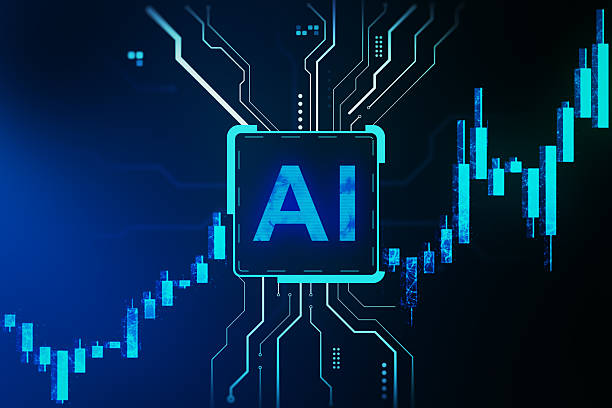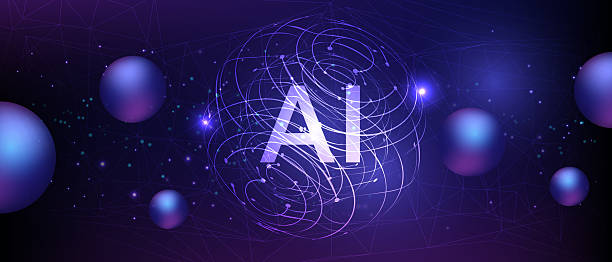In the ever-expanding landscape of artificial intelligence and machine learning, the capacity to generalize beyond known data is the hallmark of true intelligence. Traditional machine learning models learn from examples that are explicitly labeled and structured for a specific task. Yet in the real world, information is infinite and ever-changing, and it is impractical to train a model on every possible scenario. Zero-shot learning, often abbreviated as ZSL, represents a significant leap toward human-like reasoning—enabling machines to recognize, infer, and respond to situations they have never encountered before.
At its core, zero-shot learning seeks to overcome the dependency on exhaustive labeled datasets. It aspires to create systems that, much like humans, can understand new concepts through abstraction, analogy, and association. The ability to generalize without direct experience lies at the heart of cognitive intelligence, and zero-shot learning embodies this pursuit within artificial systems.
The Foundations of Machine Learning and the Need for Generalization
Before exploring zero-shot learning itself, it is essential to understand the limitations of conventional supervised learning. In supervised models, algorithms are trained on datasets containing input-output pairs. The model learns to map features to labels through repeated optimization until it performs well on unseen examples from the same distribution.
However, this process assumes that both training and testing data belong to the same domain. A model trained to identify cats and dogs from labeled images cannot, by default, identify a zebra or a lion unless these classes were represented in the training set. This dependency on labeled examples restricts scalability, as collecting and annotating large, diverse datasets is time-consuming, expensive, and sometimes impossible.
Generalization—the ability to perform well on unseen data—is the ultimate goal of learning. While deep learning has improved generalization through massive data and computation, it still largely operates within the boundaries of its training distribution. True generalization requires understanding underlying relationships between concepts rather than memorizing examples. This is precisely where zero-shot learning steps in.
Defining Zero-Shot Learning
Zero-shot learning refers to the ability of a model to recognize or perform tasks involving classes or concepts that were not seen during training. Instead of relying solely on direct examples, the model uses auxiliary information—such as semantic descriptions, attributes, or language-based embeddings—to infer relationships between known and unknown categories.
For instance, imagine a model trained to identify animals like horses and dogs. During testing, it is asked to identify a zebra. Although it has never seen a zebra, it may possess semantic knowledge that a zebra is an animal with stripes and characteristics similar to a horse. By connecting this information through shared features or linguistic representations, the model can correctly infer the identity of the zebra.
This process mirrors human cognition. When a person learns about an unfamiliar object through description, they can recognize it upon first encounter. Zero-shot learning seeks to replicate this capability by combining visual, linguistic, and conceptual information to form a shared understanding space.
The Role of Semantic Knowledge and Embeddings
The cornerstone of zero-shot learning lies in semantic representation. Instead of mapping data directly to discrete class labels, models learn to project both inputs (like images or text) and class descriptions into a shared embedding space. In this semantic space, relationships between entities are represented as geometric proximity.
For example, in a visual zero-shot learning system, each class label may be associated with a vector derived from linguistic embeddings such as Word2Vec, GloVe, or BERT. Meanwhile, the visual features extracted from an image using a convolutional neural network (CNN) are mapped into the same space. Recognition then becomes a matter of measuring similarity—the image embedding closest to the class embedding is selected as the predicted label.
This framework allows a model to reason about unseen categories because semantic relationships are continuous. Even if a class like “tiger” was absent from training, its vector representation will be close to related classes like “cat” or “lion.” The model leverages this proximity to infer the correct label without direct experience.
In modern approaches, large-scale pre-trained language models such as GPT, CLIP, and T5 provide rich semantic embeddings that capture vast contextual knowledge from human language. This fusion of vision and language forms the basis for powerful zero-shot systems capable of reasoning across modalities.
Early Developments and Theoretical Foundations
The concept of zero-shot learning first gained traction in computer vision research during the early 2010s. Early studies focused on attribute-based classification, where objects were described through human-interpretable properties like “has fur,” “has stripes,” or “can fly.” Instead of training on object categories, models learned to recognize these attributes. When faced with a novel class, such as “zebra,” the model combined known attributes to infer the new category.
This approach represented a significant departure from traditional supervised learning, introducing an intermediate semantic layer between data and labels. Although initial methods were limited by manually defined attributes and small-scale datasets, they established the theoretical foundation for knowledge transfer between known and unknown categories.
As research advanced, distributed representations—particularly word embeddings—began to replace manually curated attributes. This transition enabled scalability and flexibility, as word embeddings capture relationships from large text corpora automatically. The idea of aligning vision with language through shared embeddings led to breakthroughs in zero-shot image recognition, captioning, and retrieval tasks.
The Emergence of Vision-Language Models
One of the major catalysts for modern zero-shot learning was the development of vision-language models that learn joint representations across modalities. These models leverage massive datasets of image-text pairs to learn correspondences between visual and linguistic concepts.
CLIP (Contrastive Language–Image Pretraining), developed by OpenAI, exemplifies this paradigm. Instead of training on labeled images, CLIP learns to match images with their corresponding natural-language captions. During inference, it can perform zero-shot classification by comparing an image to a set of textual prompts describing possible categories. Because CLIP’s training data spans millions of diverse image-text pairs, it generalizes remarkably well to unseen classes and tasks.
This approach demonstrates that zero-shot learning need not rely solely on explicitly defined attributes. Natural language itself can serve as a universal interface for knowledge transfer. By grounding perception in language, models like CLIP, ALIGN, and BLIP achieve broad generalization without explicit supervision for specific tasks.
Zero-Shot Learning in Natural Language Processing
Zero-shot learning extends beyond vision into the realm of natural language processing (NLP). In NLP, it refers to a model’s ability to perform tasks it was never explicitly trained for by leveraging its understanding of language and semantics.
Large pre-trained models such as GPT, T5, and BERT are prime examples. These models are trained on massive corpora through self-supervised objectives like next-word prediction or masked language modeling. Although they are not directly optimized for downstream tasks like sentiment analysis or translation, they can perform these tasks through prompting or fine-tuning without task-specific examples.
For instance, when given the instruction “Classify the following review as positive or negative,” a zero-shot language model can understand the task and generate the correct label based on its internal representation of language patterns and world knowledge. This capability arises because language models encode not just syntax but also semantics, relationships, and commonsense reasoning derived from large-scale text.
The success of zero-shot NLP models has transformed the field. Tasks once requiring annotated datasets can now be handled through prompt engineering—crafting natural-language instructions that guide the model’s behavior. This shift from data-driven to instruction-driven learning marks a profound step toward more general and flexible AI systems.
The Mathematics of Zero-Shot Generalization
From a mathematical perspective, zero-shot learning can be viewed as a problem of mapping between two spaces: the feature space of observed data and the semantic space of class descriptions. Let ( X ) denote the input data (e.g., images), ( Y_s ) the set of seen classes, and ( Y_u ) the set of unseen classes. During training, the model has access to labeled pairs ( (x, y_s) ), where ( y_s \in Y_s ), but during testing, it must predict labels from ( Y_u ).
To achieve this, both inputs and labels are projected into a common embedding space through functions ( f(x) ) and ( g(y) ), where ( f ) maps features and ( g ) maps semantic descriptions. The recognition task becomes a similarity matching problem:
[
\hat{y} = \arg\max_{y \in Y_u} \text{sim}(f(x), g(y))
]
where ( \text{sim}(\cdot) ) denotes a similarity measure such as cosine similarity or dot product.
The strength of zero-shot learning lies in the quality of the semantic mapping ( g(y) ). If the embeddings capture meaningful relationships, the model can generalize from seen to unseen classes by leveraging proximity in this space. However, if the semantic representation is noisy or poorly aligned, the model may misclassify unseen categories.
This mathematical formulation underpins not only classic ZSL but also modern multimodal systems. In CLIP, for instance, ( f(x) ) is the image encoder and ( g(y) ) the text encoder, trained jointly to maximize similarity between matching image-text pairs and minimize similarity for mismatched ones.
Generalized Zero-Shot Learning
While traditional zero-shot learning assumes that seen and unseen classes are disjoint, real-world scenarios often involve a mixture of both. This led to the development of generalized zero-shot learning (GZSL), where the model must classify examples from both seen and unseen categories during testing.
GZSL poses a greater challenge because models tend to bias toward seen classes. Since the training data only contains seen categories, the model’s decision boundaries are often skewed. Researchers address this through calibration strategies, generative models, or feature synthesis techniques that balance the representation of unseen classes.
For example, generative adversarial networks (GANs) and variational autoencoders (VAEs) can synthesize visual features for unseen categories based on their semantic descriptions. These synthetic examples expand the training data, effectively converting the zero-shot problem into a supervised one. Such generative approaches have significantly improved performance in GZSL benchmarks, bridging the gap between theoretical generalization and practical application.
Zero-Shot Transfer Across Domains
One of the most exciting implications of zero-shot learning is its potential for cross-domain transfer. Traditional models often fail when applied to data distributions different from those they were trained on—a phenomenon known as domain shift. Zero-shot models, however, can adapt across domains by grounding their understanding in shared semantic representations.
For instance, a zero-shot model trained on natural images can classify sketches or medical images if the semantic descriptors remain consistent. Similarly, language models trained on general text can answer domain-specific questions in law or medicine through contextual prompts. This adaptability makes zero-shot learning a cornerstone of transfer learning and a key component of building versatile AI systems.
Challenges and Limitations
Despite its promise, zero-shot learning faces significant challenges. One major issue is the “semantic gap”—the discrepancy between visual or sensory data and abstract linguistic descriptions. Not all concepts can be easily captured in language, and differences in how humans and models represent meaning can lead to errors.
Another limitation is dataset bias. If the training data used to learn embeddings lacks diversity, the resulting model will struggle with underrepresented classes or cultures. For example, a model trained primarily on Western-centric datasets may misinterpret non-Western symbols or contexts.
Scalability also introduces difficulties. As the number of unseen classes grows, distinguishing between them based solely on semantic proximity becomes harder. Fine-grained distinctions, such as differentiating between similar bird species, often require detailed visual cues that semantic vectors cannot capture fully.
Furthermore, evaluation metrics for zero-shot learning remain a topic of debate. Conventional accuracy measures may not fully capture a model’s generalization ability, especially when both seen and unseen classes are involved. Researchers continue to explore better ways to quantify true zero-shot understanding.
The Intersection with Few-Shot and One-Shot Learning
Zero-shot learning is closely related to few-shot and one-shot learning, which also address data scarcity. While zero-shot models operate with no examples of new classes, few-shot models have access to a small number of labeled instances. Both approaches aim to improve generalization through knowledge transfer and meta-learning.
Few-shot learning often employs metric-based techniques like prototypical networks or model-agnostic meta-learning (MAML), where models learn to adapt quickly to new tasks. In contrast, zero-shot learning relies more heavily on semantic or language-based transfer. However, the line between these paradigms is increasingly blurred as modern architectures combine elements of both.
Recent advances show that models capable of zero-shot reasoning can often perform few-shot learning with minimal additional tuning. This synergy points toward the emergence of truly flexible intelligence systems that can seamlessly adapt to varying levels of supervision.
The Role of Pretraining and Scaling Laws
The remarkable progress in zero-shot learning owes much to large-scale pretraining. Models trained on enormous datasets develop broad representations that encompass diverse knowledge. Scaling laws in machine learning indicate that performance improves predictably with model size, dataset size, and computational resources.
Large multimodal transformers, trained on trillions of tokens and billions of images, learn representations that generalize across languages, domains, and modalities. These models exhibit zero-shot capabilities as an emergent property of scale. They do not need explicit task-specific supervision because their internal representations already encode the structure of the world.
This phenomenon suggests that generalization is not merely a function of algorithmic design but also of exposure to diverse information. The richer the pretraining data, the more a model can infer relationships between seen and unseen concepts.
Ethical Considerations and Bias in Zero-Shot Systems
As zero-shot models gain influence, ethical concerns become increasingly significant. Because these systems often rely on large-scale data scraped from the internet, they inevitably inherit societal biases, stereotypes, and inaccuracies. When applied in zero-shot scenarios, these biases can propagate or even amplify in unpredictable ways.
For instance, a zero-shot image model might associate certain professions with specific genders or ethnicities, reflecting biases present in the data. Similarly, a language model might produce inappropriate or biased responses when prompted about sensitive topics. These issues highlight the need for transparency, fairness, and careful dataset curation.
Zero-shot systems also raise questions of accountability. Since they make inferences without explicit examples, tracing the source of errors can be challenging. Understanding and mitigating these risks is essential for responsible deployment in real-world applications such as healthcare, law, or education.
Real-World Applications of Zero-Shot Learning
Zero-shot learning is not merely an academic curiosity; it has tangible applications across industries. In computer vision, ZSL enables automated systems to recognize objects or species not included in their training data—useful in ecological monitoring or quality inspection.
In natural language processing, zero-shot models power applications like multilingual translation, question answering, and sentiment analysis without requiring separate training datasets for each language or domain.
In robotics, zero-shot reasoning allows machines to perform new tasks based on verbal instructions rather than pre-programmed routines. For example, a household robot can understand the command “bring me the red cup from the kitchen” even if it has never been trained on that exact phrase or context.
Cybersecurity also benefits from zero-shot detection, where models identify novel threats or malware types based on behavioral patterns rather than explicit examples. The capacity to detect anomalies without prior labeling enhances resilience against evolving attacks.
The Future of Zero-Shot Learning
The trajectory of zero-shot learning points toward increasingly general and adaptable AI systems. As models continue to integrate multimodal data—text, images, audio, and beyond—they inch closer to a unified understanding of knowledge.
Future research aims to close the semantic gap, enabling deeper alignment between perception, language, and reasoning. This may involve hybrid architectures that combine symbolic reasoning with neural networks, giving models both flexibility and interpretability.
Advances in causal reasoning may further enhance zero-shot generalization by allowing models to infer cause-and-effect relationships rather than mere correlations. This shift could lead to AI systems that understand why something occurs, not just what it is.
Additionally, federated and continual learning paradigms may enable zero-shot models to learn safely from decentralized and evolving data sources without retraining from scratch. These developments could transform zero-shot learning from an experimental technique into a fundamental principle of intelligent systems.
Conclusion
Zero-shot learning represents a milestone in the quest for artificial generalization. It bridges the gap between task-specific learning and universal understanding, allowing machines to interpret new situations with minimal supervision. By leveraging semantics, language, and large-scale pretraining, zero-shot models emulate a uniquely human trait—the ability to reason about the unfamiliar.
As AI continues to evolve, zero-shot learning will remain central to building systems that are not just powerful but also flexible, efficient, and closer to true intelligence. The path ahead involves both technical innovation and ethical responsibility, ensuring that models which generalize better also behave fairly and transparently.
In a world where knowledge grows faster than data can be labeled, zero-shot learning offers a glimpse of an AI that learns as humans do—through understanding, context, and imagination.






